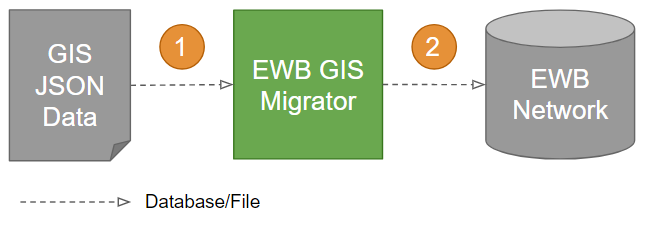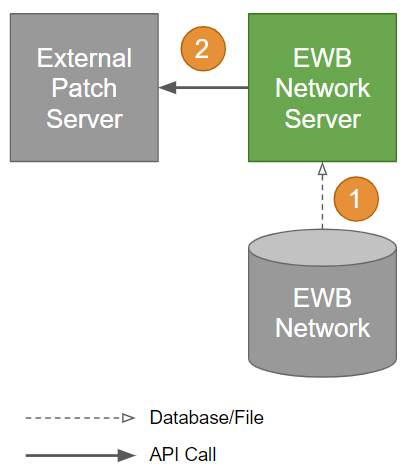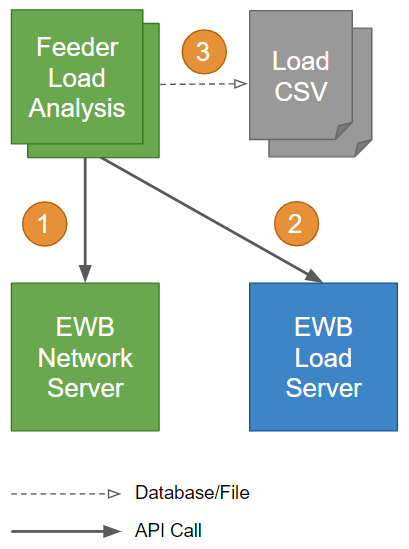Overview
GIS Model Extraction#

This is a new tool that will read the GIS JSON Data (1) and convert it to an EWB Network (2). It will run once nightly producing the base GIS network model.
EWB Network Server#
The EWB Network Server will be modified to allow the applying of patches to the network.

The EWB Network will be loaded from disk (1), with new optional startup parameters controlling which patches to apply (if any) form the External Patch Server (2).
Feeder Load Analysis#
The Feeder Load Analysis tool will be built to support running as a AWS Lambda writing to an S3 data share.

An instance of the Feeder Load Analysis will be started for each feeder, with configurable season and aggregation type settings. Each instance will load the feeders assets from the EWB Network Server (1), request the appropriate load readings from the EWB Load Server (2) and save the report to a Load CSV (3).
!!! warning The memory requirements the EWB Load Server are high (currently approx 48GB) and is expected to continue to run with the real-time systems team in OT/DMZ.
Network Builder Usage#
For the Network Builder project there are three modes of analysis that will need to be run:
- Base
- Committed
- Delta
Below is an overview of how each of these processes will use the above architecture.
Base#
- Start the EWB Network Server with no patching.
- For each feeder start a Feeder Load Analysis for each season and aggregation type.
- When all Feeder Load Analysis instances have completed shut down the EWB Network Server.
Committed#
- Start the EWB Network Server with optional parameters requesting all committed patches be applied.
- For each feeder start a Feeder Load Analysis for each season and aggregation type.
- When all Feeder Load Analysis instances have completed shut down the EWB Network Server.
Delta#
- Start the EWB Network Server with optional parameters requesting patches of concern be applied.
- For each feeder of interest start a Feeder Load Analysis for each season and aggregation type.
- When all Feeder Load Analysis instances have completed shut down the EWB Network Server.